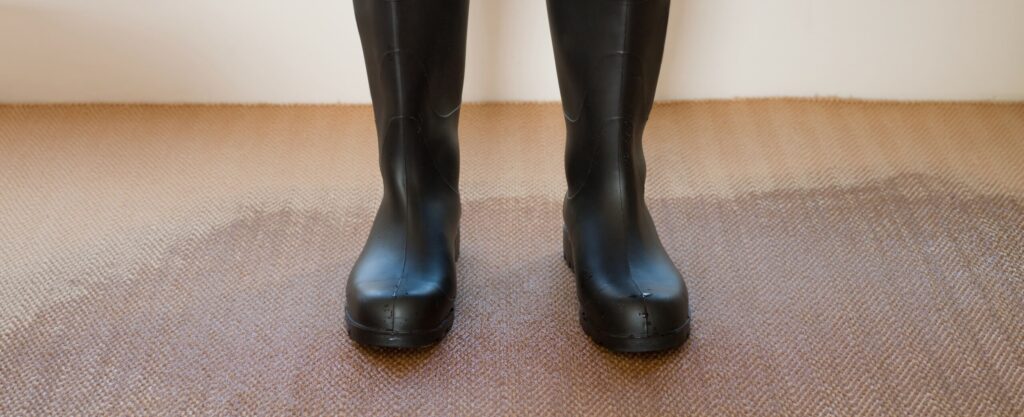Whether it’s an accidental spill or a water damage incident, proper and prompt drying is crucial to prevent further damage and maintain the integrity of your valuable rugs and carpets.
Being aware of the necessary steps when dealing with a wet or flooded carpet can greatly minimize potential damage. Keep reading as we unveil the 5 steps to effectively dry a wet carpet and protect it from further harm.

Time is of the essence when it comes to wet carpets or rugs. As soon as you notice the moisture, take immediate action to begin the drying process. This helps prevent mold and mildew growth and minimizes potential damage.
2. Blot and Absorb Excess Moisture
Using dry towels or absorbent cloths, gently blot the wet area to remove as much excess moisture as possible. Avoid rubbing vigorously, as it can push the moisture deeper into the fibers. Continue blotting until no more liquid is being absorbed.
3. Ensure Adequate Air Circulation
Maximize air circulation by opening windows, doors, and using fans or air conditioners. This helps promote the evaporation of moisture from the rug or carpet. Consider using a dehumidifier to reduce humidity levels and further aid in drying.

4. Elevate Furniture and Properly Position the Rug or Carpet
If furniture is in contact with the wet rug or carpet, use coasters or aluminum foil to lift them off and prevent potential transfer of moisture. Rearrange the rug or carpet, ensuring it is properly stretched out and exposed to airflow for even drying.
5. Call in the professionals to assist you
If the water damage is more severe, it is crucial to immediately contact water damage restoration professionals upon realizing that you have experienced a flood.
- FOR AREA RUGS: To dry area rugs efficiently, you will need to use a tumble dryer and then hang them on a rack, as laying them on the floor can damage both the rug and the floor. However, it is important to bear in mind that most rugs won’t fit in a normal tumble dryer and even if they do, they can cause a big problem because of the weight they get when wet. If you do not have the necessary equipment to dry them or do not know how to proceed, we recommend you to contact us and we will advise you on best practices.
- FOR WALL-TO-WALL CARPETS: the drying process is even more difficult as they cannot be moved to another location to dry. It is important that in the event of water damage to your carpet you call a professional as soon as possible as they have high-powered fans, dehumidifiers and professional extraction machines that will help your carpet dry and prevent any further damage.

